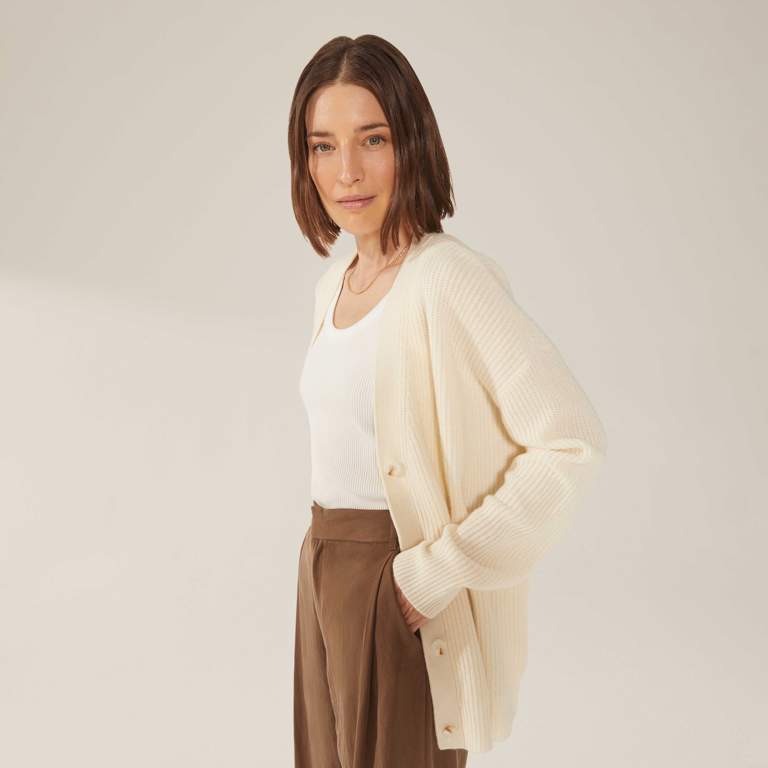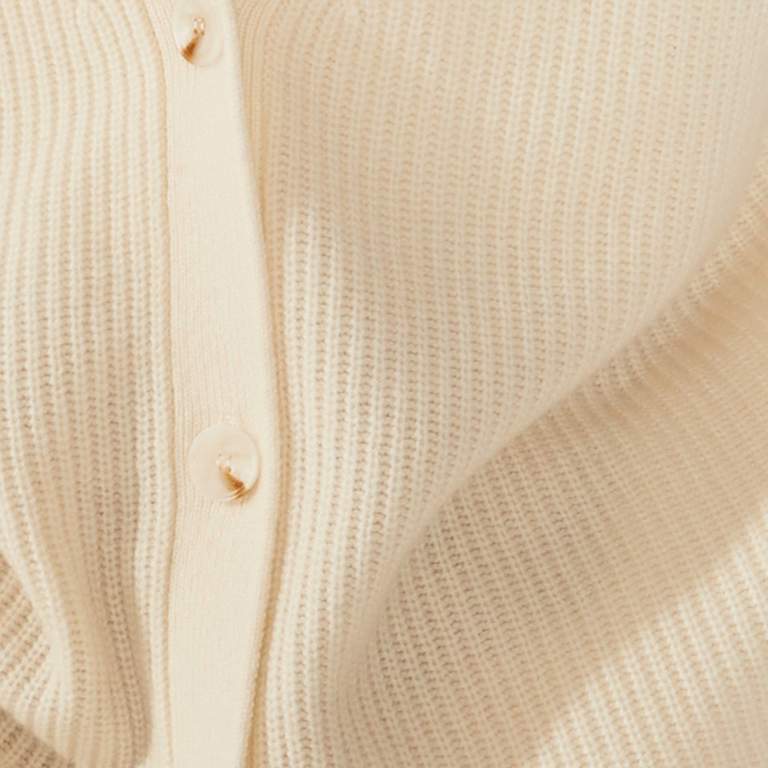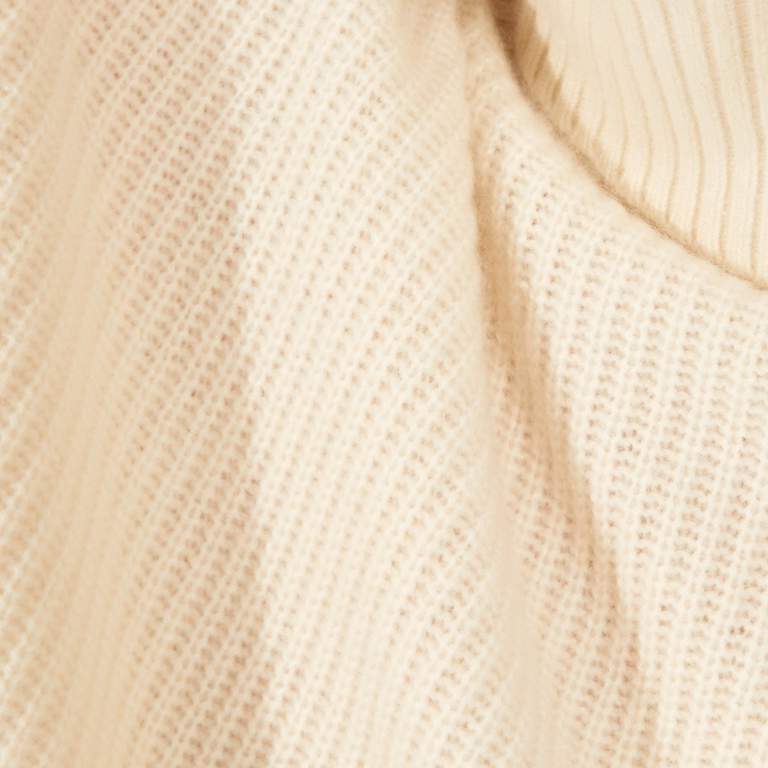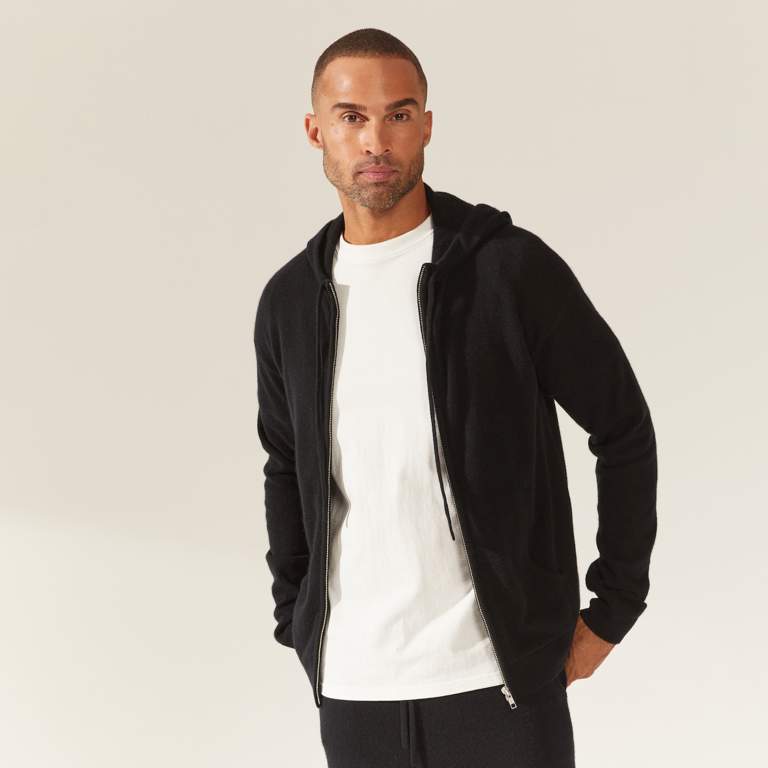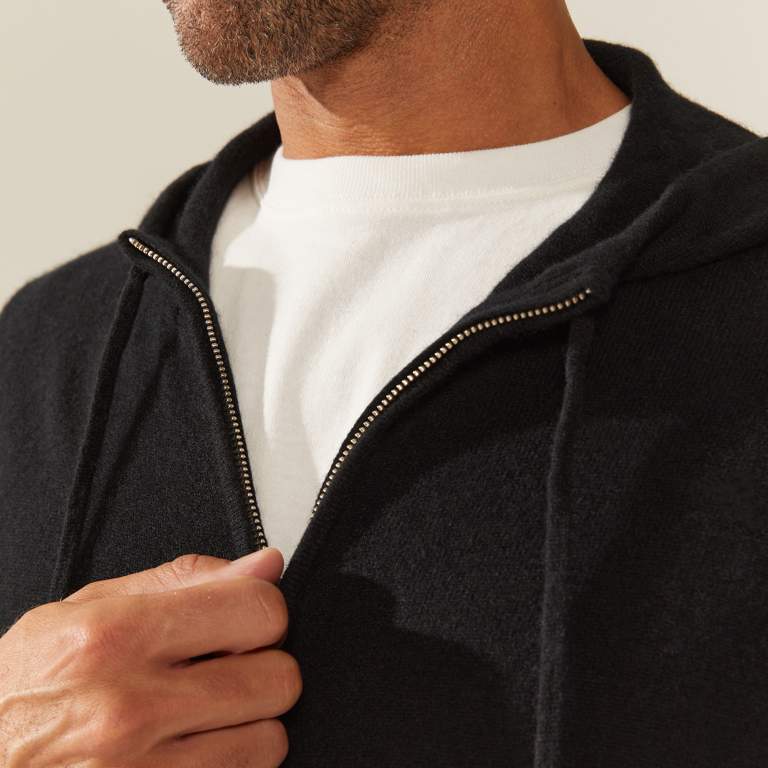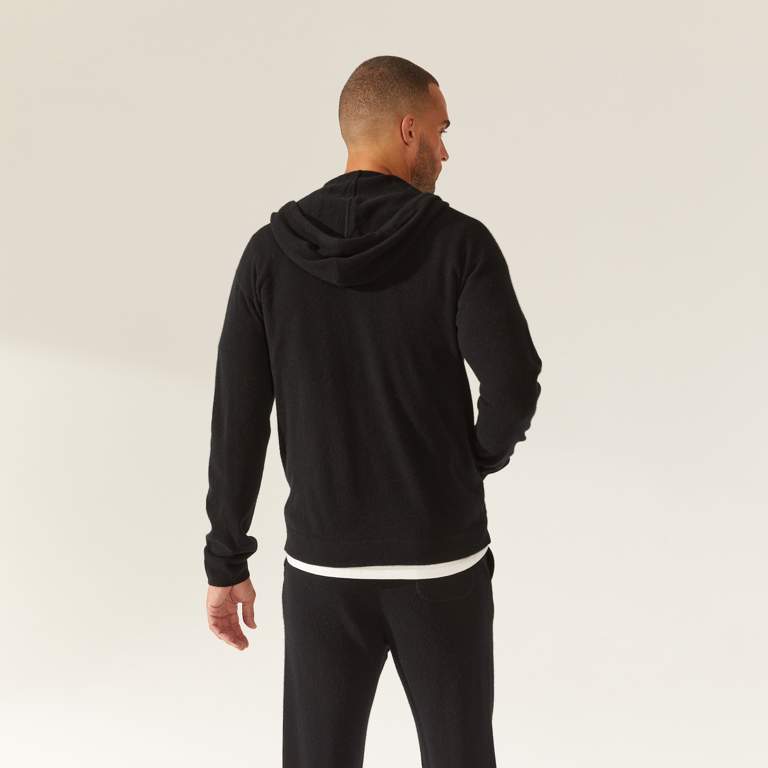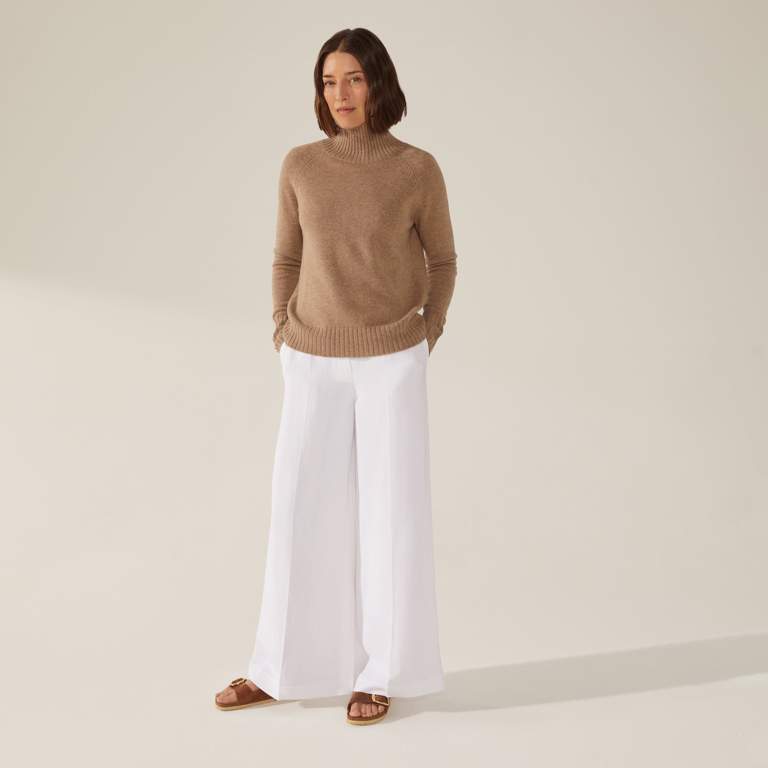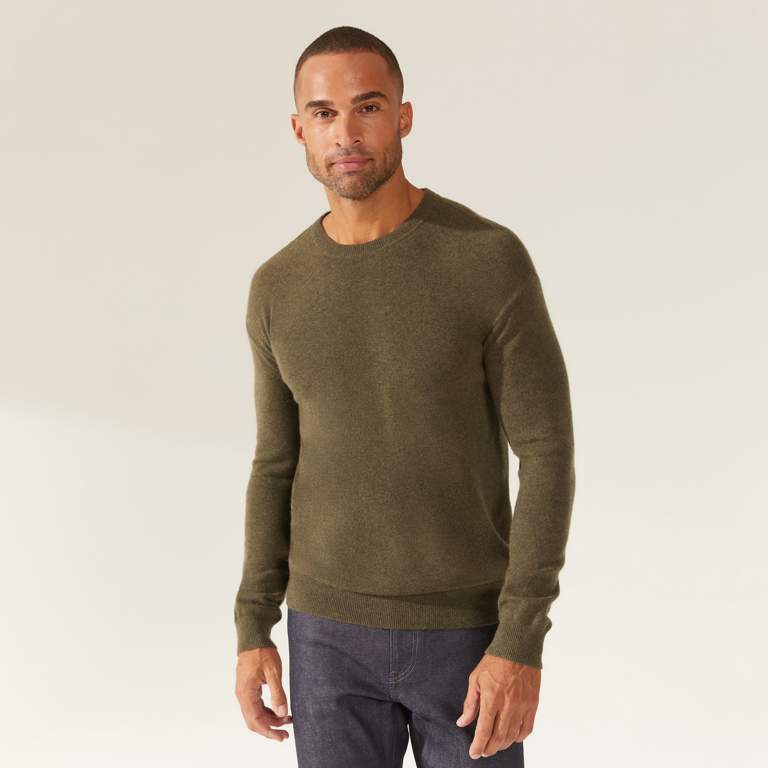Bestsellers for Cashmere
Cashmere is expensive due to its rarity and limited supply, which creates a high demand for the fibers. The luxury factor also plays a role, as cashmere is often associated with high-end fashion and luxury brands, making it a status symbol. The production process is labor-intensive, involving the harvesting and processing of cashmere fibers, as well as the craftsmanship required to create cashmere products. Cashmere's exceptional quality, including its softness, warmth, and durability, also contributes to its higher price. Ethical considerations, branding, and marketing strategies further impact the pricing of cashmere. Comparisons to alternative materials like merino wool or alpaca reveal the unique characteristics that differentiate cashmere. Finally, investing in cashmere products can provide long-term value, but proper care and maintenance are essential to preserve their quality.

on Italic.com
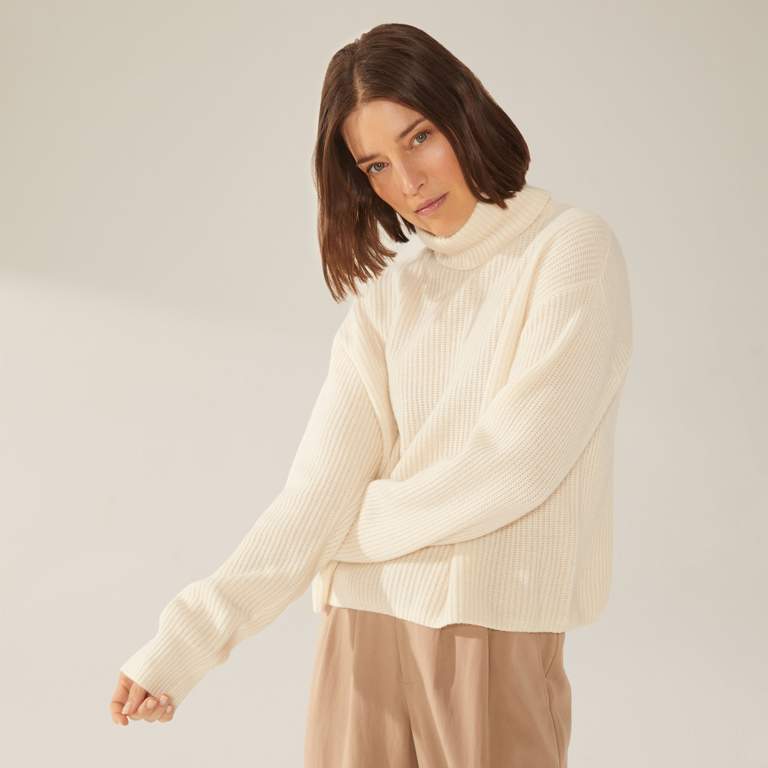
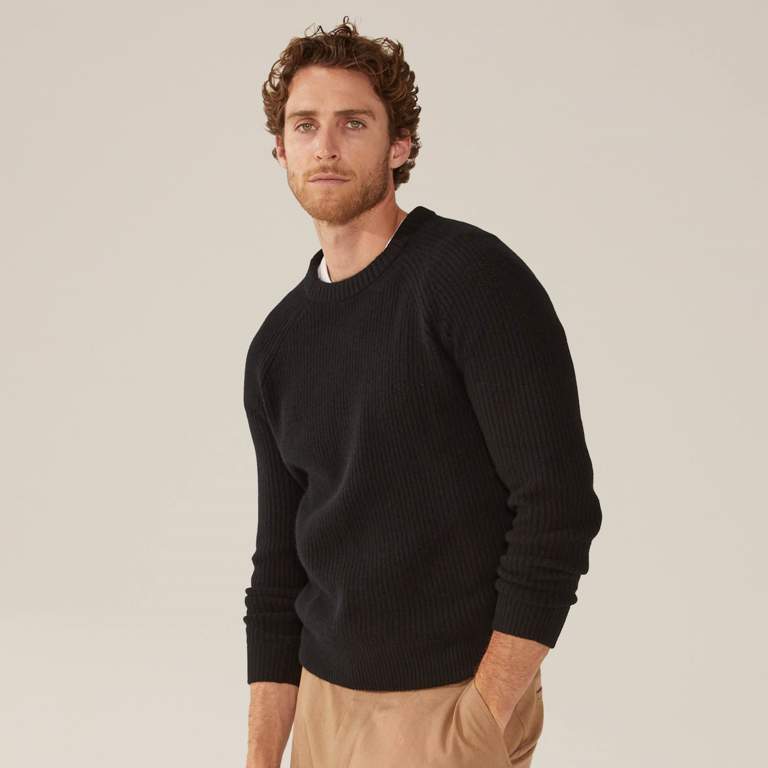
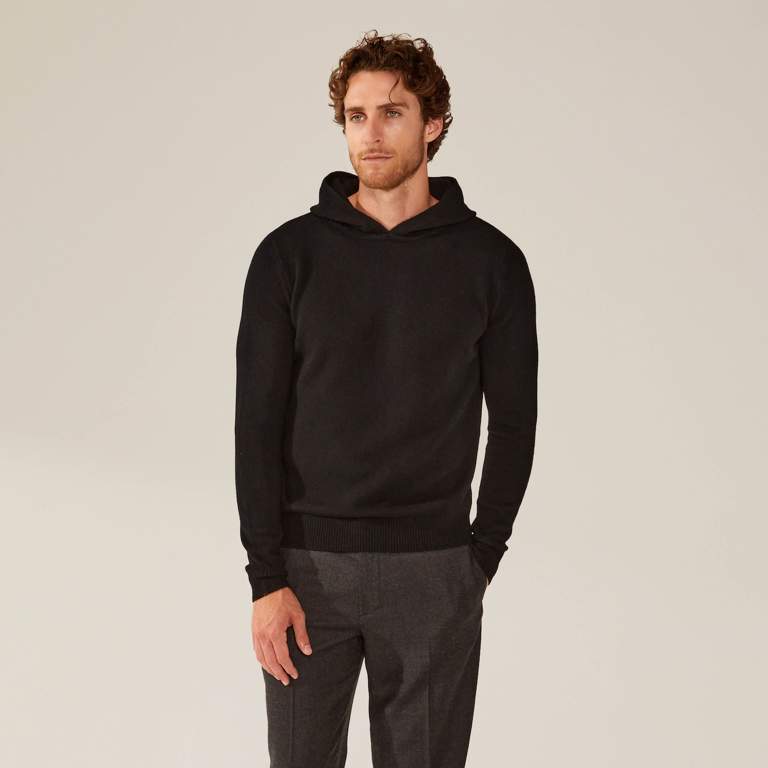
The Rarity of Cashmere
Cashmere is known for its rarity, which contributes to its higher price tag. The production of cashmere involves harvesting the fine hairs from the undercoat of cashmere goats, which are primarily found in regions like Mongolia, China, and Iran. These goats produce a limited amount of cashmere fibers each year, making it a scarce resource.
The demand for cashmere is high due to its exceptional softness, warmth, and luxurious feel. Cashmere has long been associated with high-end fashion and luxury brands, further adding to its desirability. Many people view cashmere as a status symbol and are willing to pay a premium for products made from this luxurious material.
The production process of cashmere is labor-intensive and requires skilled craftsmanship. After the cashmere fibers are harvested, they undergo a meticulous process of cleaning, sorting, and spinning to create the fine yarn used in cashmere products. This attention to detail and craftsmanship adds value to the final product.
Cashmere is also known for its quality and durability. The fibers are incredibly soft and provide excellent insulation, keeping you warm in colder weather. Additionally, cashmere has a natural elasticity that allows it to retain its shape over time. These qualities contribute to the higher price of cashmere products.
Ethical considerations also play a role in the pricing of cashmere. Many brands now focus on fair trade practices and sustainability in the cashmere industry. Ethical sourcing and responsible production methods can increase the cost of cashmere products but ensure that workers are treated fairly and the environment is protected.
Branding and marketing also influence the pricing of cashmere. Luxury brands often position cashmere as a premium product, associating it with exclusivity and quality. The reputation of a brand can impact the perceived value of cashmere products and justify higher prices.
While there are alternative materials like merino wool or alpaca that offer similar qualities to cashmere, cashmere remains highly sought after for its unique softness and luxurious feel. The rarity, quality, and craftsmanship associated with cashmere make it a worthwhile investment for those looking for long-lasting, high-quality products.
To make the most of your cashmere items, it's important to care for them properly. Follow the care instructions provided by the manufacturer, which usually recommend gentle hand washing or dry cleaning. Avoid exposing cashmere to harsh chemicals or excessive heat, as this can damage the fibers. With proper care, your cashmere products can last for many years, making them a valuable addition to your wardrobe.
The Luxury Factor
The luxury factor plays a significant role in the high price of cashmere. Cashmere has long been associated with high-end fashion and luxury brands, making it a symbol of prestige and sophistication. The perception of cashmere as a luxury material drives up its demand and, consequently, its price.
Cashmere is often seen as a status symbol, representing wealth and refinement. Its rarity and exclusivity contribute to its luxurious image. The limited supply of cashmere fibers, combined with the high demand for them, further drives up the price of cashmere products.
Additionally, the production process of cashmere is labor-intensive and requires skilled craftsmanship. Cashmere fibers are harvested from the undercoat of cashmere goats through a delicate process. The fibers are then carefully processed and woven into luxurious fabrics. The craftsmanship involved in creating cashmere products adds to their value and justifies their higher price.
Cashmere is known for its exceptional softness, warmth, and durability. These qualities make it highly desirable and contribute to its higher price compared to other materials. Cashmere products are often considered investment pieces that can last for many years with proper care.
Ethical considerations also play a role in the pricing of cashmere. Fair trade and sustainability practices in the cashmere industry can increase production costs, which are then reflected in the price of cashmere products. Ethical sourcing and responsible manufacturing processes are important factors for consumers who value transparency and sustainability.
Branding and marketing also influence the pricing of cashmere. Luxury brands often invest heavily in branding and marketing to position their cashmere products as premium offerings. The reputation and image of the brand can significantly impact the perceived value and price of cashmere items.
While there are alternative materials like merino wool or alpaca that offer similar qualities to cashmere, cashmere remains highly sought after for its unique characteristics. Factors such as the fineness of the fibers, their length, and how they are processed differentiate cashmere from its alternatives and contribute to its higher price.
Investing in cashmere can be seen as a long-term investment due to the durability and timeless appeal of cashmere products. With proper care and maintenance, cashmere items can retain their luxurious feel and appearance for many years. Taking the time to follow care instructions and store cashmere properly can help preserve its quality and ensure its longevity.
The Production Process
The production process of cashmere involves several labor-intensive steps that contribute to its higher price. Cashmere fibers are harvested from the soft undercoat of cashmere goats, which are primarily found in regions such as Mongolia, China, and Iran. The goats are combed or sheared during the spring molting season to collect the fine fibers.
After harvesting, the raw cashmere fibers undergo a thorough cleaning process to remove impurities such as dirt, oils, and vegetable matter. This process requires skilled labor and attention to detail to ensure the fibers are properly cleaned without damaging their delicate structure.
Once cleaned, the cashmere fibers are sorted based on their quality and color. The highest quality fibers, known as Grade A or Grade A+ cashmere, are selected for luxury products due to their exceptional softness and fineness. The sorting process is meticulous and time-consuming, as each fiber is examined and graded by hand.
After sorting, the cashmere fibers are spun into yarn using specialized machinery. The spinning process requires precision to create yarns that are consistent in thickness and strength. The resulting yarn is then used to knit or weave into various cashmere products such as sweaters, scarves, and blankets.
Throughout the production process, craftsmanship plays a crucial role in creating high-quality cashmere products. Skilled artisans with years of experience handle each step with care and attention to detail. Their expertise ensures that the final products meet the highest standards of quality and craftsmanship.
The combination of limited supply, labor-intensive processes, and skilled craftsmanship contributes to the higher price of cashmere products. However, the exceptional softness, warmth, and durability of cashmere make it a worthwhile investment for those seeking luxurious and long-lasting pieces.
Quality and Durability
Cashmere is known for its exceptional quality and durability, which contributes to its higher price. The fibers used to make cashmere are incredibly soft and luxurious, providing a level of comfort that is unmatched by other materials. Cashmere is also known for its excellent insulation properties, keeping you warm in cold weather while remaining lightweight.
One of the reasons cashmere is so durable is because it is made from the fine undercoat of cashmere goats, which is carefully harvested and processed. The fibers are longer and stronger than those found in other types of wool, making cashmere products resistant to pilling and wear. With proper care, cashmere items can last for many years, making them a worthwhile investment.
In addition to its durability, cashmere also has a timeless appeal. Its softness and luxurious feel have made it a staple in high-end fashion and luxury brands. Cashmere products are often associated with quality and sophistication, further adding to their desirability.
When considering the price of cashmere, it's important to take into account the labor-intensive production process. Harvesting the cashmere fibers requires skilled craftsmanship and attention to detail. The fibers are then carefully processed and woven into luxurious fabrics. The scarcity of cashmere fibers also plays a role in its higher price, as there is a limited supply compared to the demand.
Ethical considerations also contribute to the pricing of cashmere. Many brands now focus on fair trade practices and sustainability in the cashmere industry, ensuring that the goats are treated humanely and that the environment is protected. These ethical practices can increase the cost of production but also provide assurance that the cashmere products you purchase are responsibly sourced.
While cashmere may be more expensive than other materials, its exceptional quality, durability, and luxurious feel make it a worthwhile investment. By properly caring for your cashmere items, you can enjoy their warmth and softness for years to come.
Ethical Considerations
When it comes to cashmere, ethical considerations play an important role in understanding the pricing of this luxury material. The cashmere industry has faced criticism for its impact on the environment and animal welfare. However, there are brands that prioritize ethical practices and sustainability.
Fair trade and sustainability practices are increasingly being adopted by some cashmere producers. These practices ensure that workers are paid fair wages and work in safe conditions. They also aim to minimize the environmental impact of cashmere production by implementing sustainable farming methods and reducing water usage.
Ethical sourcing of cashmere fibers can contribute to higher prices. Brands that prioritize ethical practices often invest more in the production process to ensure that their products meet certain standards. This includes working with suppliers who follow responsible herding practices and ensuring that animals are treated humanely.
By choosing to support brands that prioritize ethical sourcing and sustainability, consumers can contribute to positive change within the cashmere industry. While these brands may have higher price points, they offer peace of mind knowing that the products have been produced with consideration for both people and the planet.
It is important for consumers to educate themselves about the brands they choose to support and look for certifications or transparency in their sourcing practices. By making informed purchasing decisions, consumers can help drive demand for ethically produced cashmere and encourage more brands to adopt responsible practices.
Branding and Marketing
Branding and marketing play a significant role in positioning cashmere as a premium and luxurious product. Cashmere has long been associated with high-end fashion and luxury brands, creating a perception of exclusivity and desirability. The branding and marketing efforts of these companies help to reinforce this image and justify the higher price point of cashmere.
Luxury brands often invest heavily in creating a strong brand identity and reputation. They use storytelling, imagery, and advertising campaigns to evoke a sense of luxury, sophistication, and indulgence associated with cashmere. By showcasing the craftsmanship, quality, and timeless elegance of cashmere products, these brands create a desire among consumers to own and experience the luxury that cashmere represents.
Marketing strategies also focus on highlighting the exceptional qualities of cashmere, such as its softness, warmth, and durability. Brands emphasize the superior comfort and luxurious feel of cashmere against the skin, making it an indulgent choice for consumers seeking the ultimate in comfort and style.
In addition to branding and marketing efforts, the perceived value of cashmere is also influenced by factors such as ethical considerations and sustainability practices in the industry. Brands that prioritize ethical sourcing and fair trade practices may command a higher price for their cashmere products, as consumers are increasingly conscious of the social and environmental impact of their purchases.
While there are alternative materials like merino wool or alpaca that offer similar qualities to cashmere, branding and marketing play a crucial role in differentiating cashmere as a premium choice. The reputation and prestige associated with cashmere set it apart from other materials, making it a sought-after luxury item.
Investing in cashmere is often seen as a long-term investment due to its durability and timeless appeal. With proper care and maintenance, cashmere products can last for many years, providing value for money over time.
Overall, branding and marketing efforts help to position cashmere as an aspirational product that represents luxury, quality, and indulgence. By creating a strong brand identity and emphasizing the exceptional qualities of cashmere, brands can justify the higher price point and appeal to consumers seeking a truly luxurious experience.
Alternative Materials
While cashmere is known for its luxurious qualities, there are alternative materials that offer similar benefits. These materials can provide a more affordable option without compromising on comfort and style.
Merino Wool: Merino wool is a popular alternative to cashmere. It is known for its softness, warmth, and breathability. Merino wool is also hypoallergenic and has natural moisture-wicking properties, making it an excellent choice for both cold and warm climates.
Alpaca: Alpaca wool is another alternative to cashmere. It is incredibly soft, lightweight, and warm. Alpaca fibers are also naturally hypoallergenic and have excellent thermal properties, making them ideal for cozy winter garments.
Mohair: Mohair is a luxurious material made from the hair of Angora goats. It is known for its lustrous sheen, softness, and durability. Mohair fibers are lightweight and provide excellent insulation, making them suitable for both clothing and home decor items.
Silk: Silk is a natural fiber known for its smooth texture and luxurious feel. While silk may not offer the same level of warmth as cashmere, it is incredibly soft against the skin and has a beautiful drape. Silk garments are often associated with elegance and sophistication.
When considering alternative materials to cashmere, it's essential to consider factors such as personal preference, budget, and the intended use of the product. Each material has its unique qualities and benefits, allowing you to find the perfect option that suits your needs and style.
Investing in Cashmere
Cashmere is a luxurious and highly sought-after material that comes with a higher price tag. However, investing in cashmere products can be worth it due to the exceptional quality and durability they offer.
The Rarity of Cashmere
One of the reasons why cashmere is expensive is its limited supply and high demand. Cashmere fibers are derived from the undercoat of cashmere goats, which are primarily found in regions like Mongolia and China. The process of harvesting and collecting these fibers is labor-intensive and time-consuming, resulting in a scarcity of cashmere.
The Luxury Factor
Cashmere has long been associated with high-end fashion and luxury brands. Its softness, warmth, and exquisite feel make it a desirable material for those seeking indulgence and comfort. Owning cashmere products is often seen as a status symbol, adding to their allure and higher price point.
The Production Process
Creating cashmere products involves a meticulous production process that requires skilled craftsmanship. After the fibers are collected, they undergo cleaning, sorting, and spinning to create the yarn used for knitting or weaving. The attention to detail and expertise required in this process contribute to the higher cost of cashmere products.
Quality and Durability
Cashmere is renowned for its exceptional softness, warmth, and durability. The fibers are finer and softer than traditional wool, making cashmere garments incredibly comfortable to wear. Despite its delicate appearance, cashmere is surprisingly resilient and can withstand regular use without losing its shape or quality. The longevity of cashmere products adds value to the investment.
Ethical Considerations
Many cashmere brands prioritize fair trade practices and sustainability in their sourcing. Ethical considerations, such as ensuring fair wages for workers and protecting animal welfare, can influence the pricing of cashmere products. By supporting brands that prioritize ethical sourcing, consumers can feel confident about their investment in cashmere.
Branding and Marketing
Branding and marketing play a significant role in positioning cashmere as a premium product. Luxury brands often invest in creating a strong brand reputation, which can contribute to the higher price of cashmere items. The perceived value and prestige associated with certain brands can justify the premium pricing of their cashmere products.
Alternative Materials
While there are other luxury materials like merino wool or alpaca, cashmere stands out for its unique qualities. Cashmere fibers are finer and softer than most other natural fibers, providing a luxurious feel against the skin. The lightweight and insulating properties of cashmere make it ideal for both warm and cool climates. These factors differentiate cashmere from its alternatives and contribute to its higher price.
Investing in Cashmere
Investing in cashmere products can be seen as a long-term investment due to their durability and timeless appeal. With proper care, cashmere items can last for many years, making them a worthwhile addition to your wardrobe. To preserve the quality of your cashmere, follow care instructions such as hand washing or dry cleaning, storing them properly, and avoiding excessive stretching or pulling.
While cashmere may come with a higher price tag, its rarity, luxurious qualities, craftsmanship, and ethical considerations contribute to its value. Investing in cashmere allows you to indulge in the ultimate comfort and style while enjoying long-lasting and timeless pieces.
Italic Buying Guide

With its unbeatable softness and warmth, cashmere is a wonderful fabric to incorporate into your wardrobe. When shopping for cashmere, focus on fiber quality, item construction, and brand reputation.
Seek out garments made with Mongolian cashmere, which is harvested from high-altitude herds producing the longest, most durable fibers. Twelve to fourteen gauge knits stand up well to wear, while seven to ten gauge cashmere is best for lightweight layering.
Examine stitches and seams for quality and reinforced stress points. Well-made pieces in classic silhouettes work for many body types. Timeless cashmere styles easily integrate into your existing wardrobe.
Stick to established luxury brands known for ethically sourcing premium fibers. With proper care, your cashmere has the potential to become a beloved heirloom passed down for generations. Treat yourself to the gift of cozy warmth and everyday luxury.
Billie Cashmere Boyfriend Cardigan
The Billie Cashmere Boyfriend Cardigan is made of premium Mongolian cashmere and has a relaxed, boxy fit for comfort.
This product is perfect for those who appreciate luxury and comfort. It is made of high-quality Mongolian cashmere, giving it an incredibly soft texture. Its boxy and relaxed fit allows for optimal ease and comfortableness while wearing it. Additionally, the cardigan boasts an oversized style that can be worn in many different ways to suit your needs or moods.
- Luxurious cashmere material makes the cardigan extremely soft and comfortable to wear.
- The boyfriend style design offers a relaxed and casual look, perfect for any occasion.
- Customers appreciate the high-quality construction of the cardigan, which ensures durability and longevity.
- The cardigan is versatile, easily paired with a variety of outfits for both formal and casual occasions.
- It features a flattering fit, complimenting different body shapes and sizes.
- The cardigan is lightweight, making it perfect for layering without feeling too bulky or heavy.
- Customers love the variety of available colors, allowing them to choose according to their preference.
Ellie Cashmere Turtleneck
This soft Mongolian cashmere turtleneck sweater is perfect for winter.
This Ellie Cashmere Turtleneck is the perfect way to stay cozy and stylish during the colder months. The 100% Grade-A Mongolian cashmere provides a luxurious, soft feel that will keep you comfortable all day. Its roomy funnel neck ensures the wearer can enjoy maximum comfort and an effortless, relaxed look. A must-have for any winter wardrobe, this turtleneck is sure to become a staple in your closet.
- Customers love the luxurious feel of the Ellie Cashmere Turtleneck, highlighting its premium quality.
- Many reviews praise the soft and comfortable fit of the sweater, making it perfect for all-day wear.
- The turtleneck is said to have a flattering silhouette, accentuating the wearer's figure.
- Users appreciate the versatility of the turtleneck, noting that it can be easily dressed up or down.
- The Ellie Cashmere Turtleneck is lauded for its warmth, making it ideal for colder seasons.
- Several reviews mention the variety of available colors, allowing customers to choose according to their personal style.
- Customers also appreciate that this turtleneck is easy to care for, making it a practical choice for everyday wear.
Milo Cashmere Zip Hoodie
Milo Cashmere Zip Hoodie is made from Grade-A Mongolian cashmere, making it a luxurious and comfortable lightweight knit.
This Milo Cashmere Zip Hoodie is made of luxurious Grade-A Mongolian cashmere for ultimate comfort. Its 12-gauge fibers make the hoodie long-lasting and durable. The lightweight knit is perfect for keeping warm without being too heavy or bulky. It also looks luxe, making it a great addition to any outfit.
- Made from cashmere, the Milo hoodie provides a luxurious feel and superior comfort.
- The zipper design allows for easy wearing and removal, offering convenience and style.
- Customers appreciate the hoodie's versatility, it can be worn for both casual and formal occasions.
- The Milo Cashmere Zip Hoodie is praised for its durability, lasting a long time even with regular use.
- Many users love the fit of this hoodie, saying it fits perfectly and enhances their overall look.
- The hoodie is lightweight yet warm, making it ideal for different seasons.
- The product has been commended for its excellent craftsmanship, reflecting high-quality design and attention to detail.



